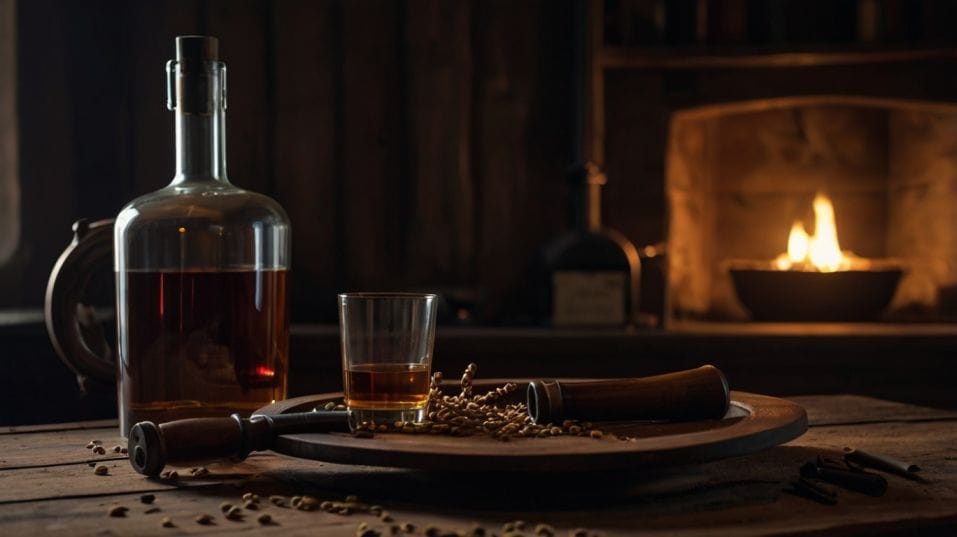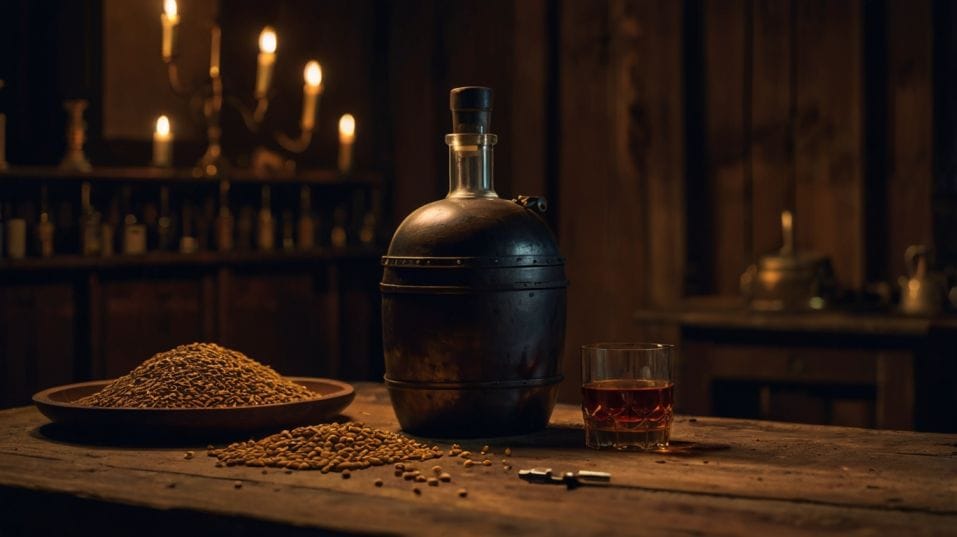The Truth About Whiskey and Gunpowder
Learn how to taste, collect, and enjoy whiskey with purpose. This guide strips away the noise so you can drink smarter and build real confidence.

What if your next sip of whiskey could change how you think, not just how you drink? Forget the props and posturing—no leather armchair or dusty decanter required. Great whiskey isn’t about style, it’s about skill.
Curiosity. Clarity. This isn’t a sacred ritual. It’s a deliberate act of focus and taste. Treat each pour like a provocation—because when you taste with purpose, you drink with power.
Flavor Is a Weapon, Not a Mystery
The single biggest mistake new drinkers make? Treating flavor like some secret code only professionals can crack. Tasting isn’t magic.
It’s muscle memory. And whiskey isn’t a crossword puzzle—it’s a sensory event. What you’re tasting isn’t made-up metaphor. It’s chemistry meeting memory.
Learn to Taste What’s Actually There
Start with what your body already knows. You’ve burned toast. Bitten into citrus peel. Smelled wet campfire clothes.
Whiskey carries all of that—because it’s built on grain, fermentation, heat, and wood. You’re not trying to impress anyone. You’re trying to make sense of what’s happening in your mouth.
Begin every tasting the same way: no distractions, a clean palate, a clean glass. Skip the ice. Swirling is for wine, not whiskey—oxidation happens differently here. Tilt the glass, nose it gently with your mouth open.
Let the vapors rise. On your first sip, don’t overanalyze. Just feel it. The texture, the weight. Then go back. The second sip is always clearer.
Good whiskey doesn’t just taste “good.” It has movement. It starts somewhere and ends somewhere else. Maybe it opens sweet and closes spicy.
Maybe it starts sharp and mellows into oak. Track that arc. That’s how you distinguish “flavor” from “impact.”

Water Isn’t Weak—It’s a Tool
If you’re drinking anything over 50% ABV, add a few drops of water. Not to tone it down—but to open it up. Water shifts volatile compounds.
You’re not diluting—you’re exploring. Try half a pour neat, half with water. Pay attention to what changes. Some notes fade. Others bloom.
You’ll start noticing structure: front-palate sweetness, mid-palate spice, back-end heat or bitterness. These are not random. They’re deliberate.
They’re the fingerprint of the mash, the barrel, the yeast, the cut. Learn to taste not just for pleasure, but for structure. You’ll enjoy more and understand faster.
Technique Over Trend
The whiskey world is full of distraction. Big-name releases. Limited editions. Collectible bottles you’ll never open. That’s not knowledge—it’s noise.
To actually improve your palate, you need discipline. You need to treat whiskey like a craft, not a category.
Build a Tasting Practice, Not a Stash
Tasting isn’t about variety—it’s about repetition. Take one bottle and taste it three different ways: in a tumbler, in a tulip glass, and in a Copita.
One shows texture. One highlights aroma. One focuses heat. Same whiskey, three different experiences.
Do the same with context. Try the bottle at night, then during the day. Try it before a meal and after. The more you isolate variables, the more you learn. That’s not geek behavior—it’s how professionals train.
Collecting with purpose beats stockpiling hype. Build a shelf that teaches you something. One lower-proof bourbon. One cask-strength rye.
One peated Scotch. One sherry-finished malt. One curveball—maybe a grain whiskey or something nontraditional. Every bottle earns its place. Every pour is a lesson.
Learn the Language of Production
Understanding how whiskey is made changes how you taste it. Most people stop at the label: bourbon, rye, single malt. But style isn’t where the real story is—it’s in the process.
Was it distilled in a column or a pot still? Was it aged in new oak or a refill cask? Was the fermentation short and hot, or long and slow? What proof was it barreled at? These questions aren’t trivia—they point directly to what you’re tasting.
Start connecting techniques to flavors. Column stills often produce lighter, cleaner spirits. Pot stills bring heft and texture. Refill casks preserve the spirit’s core.
Virgin oak layers in spice. Char level influences smoke and sweetness. These are not abstract ideas. You can taste them—if you know to look.
Culture Isn’t a Costume
Whiskey has a long history, but don’t confuse reverence with roleplay. You don’t need to act like a 19th-century distiller to appreciate a well-made pour. You just need to show up with respect for the liquid—and the people who made it.
Know the Traditions, But Think Beyond Them
Kentucky has rules. Scotland has laws. Japan has philosophy. Ireland has technique. Every whiskey-making region builds its identity on a few foundational ideas. Learn them—but don’t get boxed in by them.
Know what makes a bourbon a bourbon (corn-heavy mash, new oak, no additives). Know what defines an Islay malt (peat smoke, maritime influence).
Know how Irish whiskey often leans soft due to triple distillation and mixed mashbills. These patterns matter. But don’t let them define your preferences.
Some of the most expressive whiskey today comes from outside the usual maps—Taiwan, India, Sweden, New Zealand. Don’t confuse origin with quality. Ask how it’s made. That’s where the flavor comes from.
Drop the Performance
Nobody wants to drink with a whiskey snob. You don’t have to recite mashbills or give tasting notes out loud. Be the kind of whiskey drinker who listens, shares, and stays curious. You’ll learn faster—and you’ll enjoy it more.
Culture isn’t just where a whiskey came from—it’s how people experience it. Dive into those differences. How does Japan serve whiskey differently than the U.S.?
Why do Scots love blends just as much as single malts? Why do Americans lean toward sweet and bold, while Irish distillers chase balance and finesse? These aren’t just cultural curiosities. They help explain what’s in your glass.
Final Thoughts
Whiskey rewards focus. Every pour is a chance to train your palate and sharpen your instincts. The more you pay attention, the more you get back.
Don’t chase flash. Chase structure. Chase clarity. Build a collection that earns its keep. Taste in ways that challenge you. Ask questions the label doesn’t answer.
So here’s your next move: Pick a bottle you’ve overlooked—maybe because it’s too simple, too cheap, or too unfamiliar. Taste it clean, then with water.
Write down what changes. Go back to it in three days and see what your palate catches that it missed the first time.
That’s how you build real whiskey confidence—not by drinking more, but by drinking smarter.
That’s the truth about whiskey and gunpowder: focused fire, patient aim, clean execution. Strike the match. Take the shot. Taste like it matters. Starting now.




